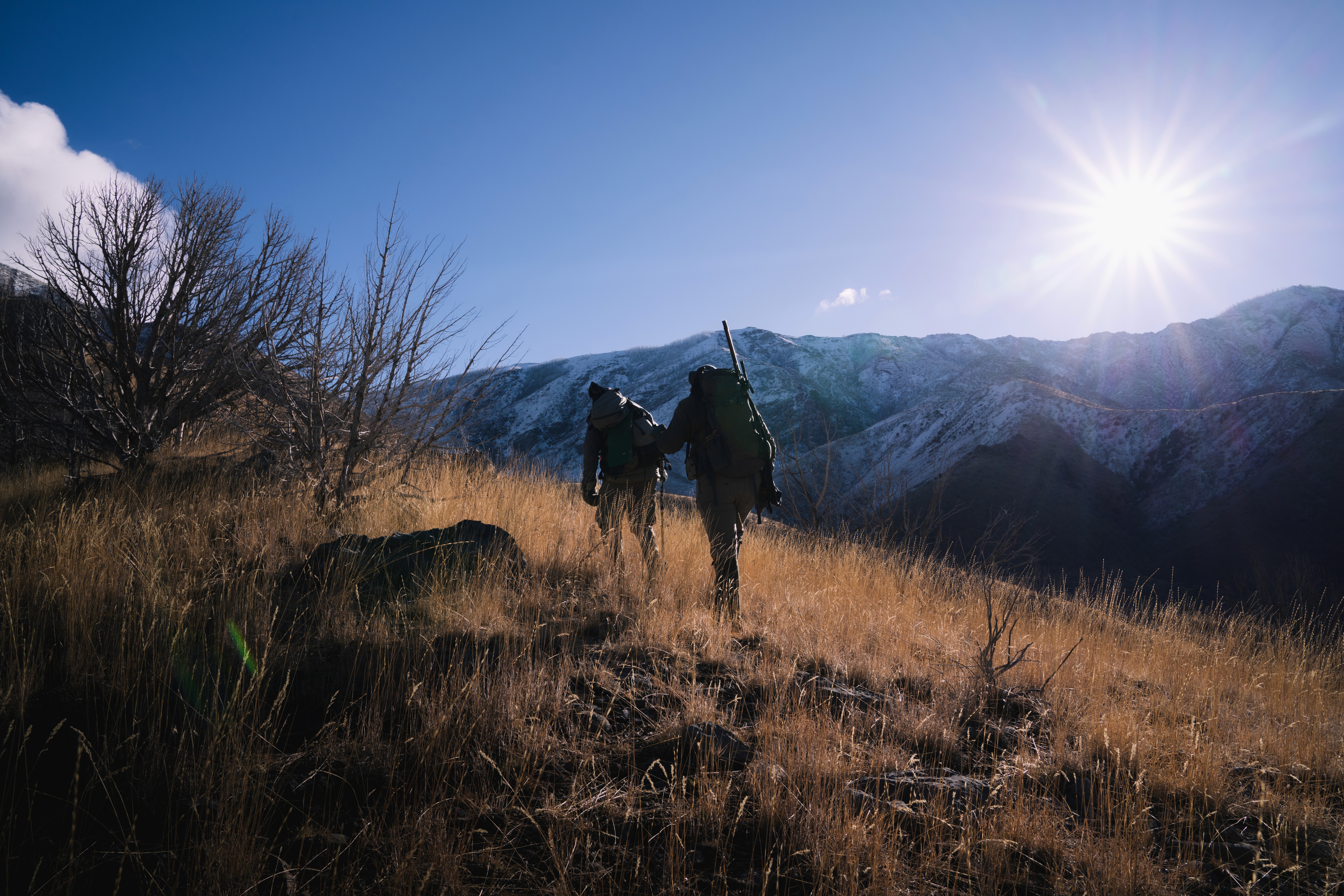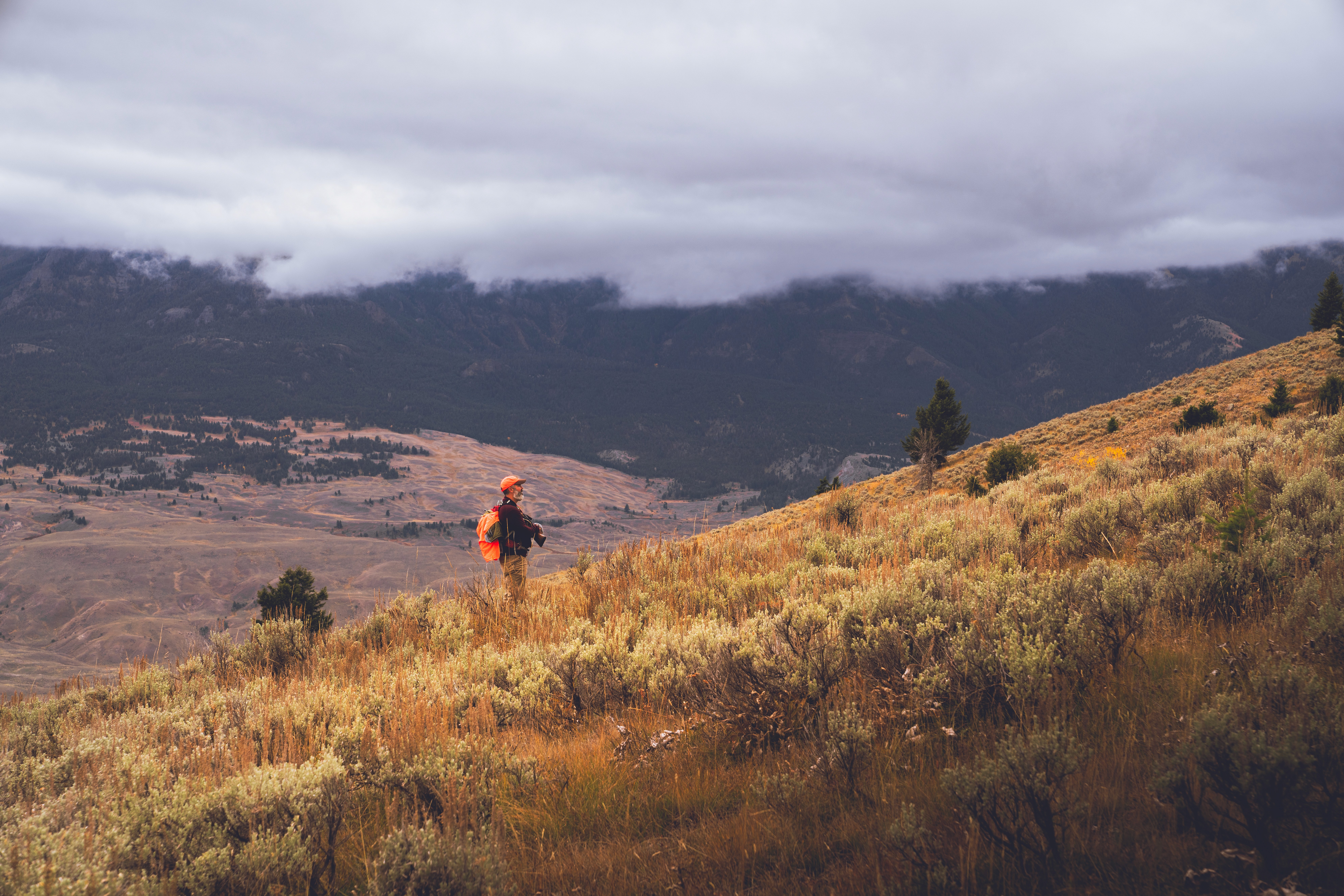



PackMule
Are You Fit to Hunt?: Physical Assessments for the Backcountry Hunter

There’s something perpetuated in hunting fitness that absolutely has to stop.
It’s the belief that suffering through a difficult workout dressed up as an assessment means you’re ready for the backcountry.
It does not.
All it means is that you suffered through a hard workout. Now, you might have learned a lot about what kind of dark place your mind drifts to when you’re soaked in sweat and bathed in acid. But you didn’t learn anything about whether or not you’re backcountry ready.
I hate to say it, but it’s true. Yes, you need to get through hard things. But who’s to say that workout should have been as hard as it was?
No, what you need is a series of tests that examines each physical quality necessary for robust backcountry readiness.
First, let’s cover fitness assessments in general. Then we’ll move on to the specific qualities you should test to get an accurate picture of your backcountry readiness.
What is a Fitness Assessment?
Let’s start by laying out what a fitness assessment is not.
It is not a mishmash of difficult tasks designed to “simulate” the demands of a given event. In our case, the event is backcountry hunting. While this design may be well-meaning, it doesn’t teach us much. For example, let’s say you finish below whatever arbitrary standard that was set. What did you learn? That you’re not fit enough for the backcountry? Okay, how? And what was the limiting factor? You have absolutely no way of learning what held you back. Maybe movement capacity limited your efficiency and caused you to gas out. Maybe you lack relative strength and that increased each movement’s energy cost. Maybe your aerobic capacity sucks and that caused you to redline well before you should have. It could be one, or all, of those things. But you’ll never know because you just did a random-ass hard workout dressed up for Halloween as a backcountry fitness assessment.
No, ladies and gentlemen, a fitness assessment is a battery of tests that singles out each quality a person needs to be physically successful for a given task or conglomeration of tasks. It’s designed to tease out limiting factors so that they can be developed. The tests included are based on, or extrapolated from, normalized data sets. For example, we know how much active range of motion a healthy ankle should have. And we know how quickly the heart rate drops in folks with good aerobic capacity. Since we know these things, we employ tests that individually examine the specific qualities. Then we piece off all of the qualities to get a full picture of the individual, their strengths, and their limiting factors. Then we can say which aspects of their fitness, or lack thereof, might limit them in the backcountry. And we can address them.
What’s more, fitness assessments tell us how to safely train. For example, if you have poor hip mobility, like you can’t touch your toes, you probably shouldn’t be deadlifting from the floor. So, testing mobility and movement capacity is pivotal for teaching us what movements we should train hard and what movements we should avoid.
If you want to know your true backcountry readiness, you can’t just do some hard workout that’s called an assessment. You need a battery of tests that examines each fitness quality that contributes to your readiness.
So, what are those qualities?
What Qualities Should You Test for Backcountry Readiness?
We are fitness generalists that participate in a strength endurance event. As such, we need access to a handful of general fitness qualities that apply to backcountry readiness. There are four big ones that you should pay attention to. It all begins with how well you move.
Movement Capacity
Movement capacity is the amount of active joint range of motion you can access in general and during specific movements. It’s how well you move your hips in general and during the squat, during the lunge, during the hinge, etc. It’s whether or not you can reach your arms overhead without taking range of motion from your back. You want those arms to go up there without needing any help from your back, otherwise the movement tax accumulates and you end up paying the bill down the road.
Moving well is the foundation of most fitness. I say most because you can get away with being a shitty mover in some circumstances – say, cycling, for example. That, however, is not the case in the backcountry or for those that want their body to perform as long as possible. Poor movement causes movement inefficiency. Everything you do costs more energy and stress is inequitably distributed among your joints, accelerating wear and tear – like in the example about the shoulders outlined above. You must move well if you want backcountry readiness and longevity.
Here’s something else we have to think about that most hunting fitness programs are overlooking: sleeping on the ground for days and weeks at a time. The healthier your joints, the better they move, and the less you’ll be impacted by sleeping in uncomfortable positions on the ground. And we all know how important sleep is to maintaining our mental capacity and achieving success on a backcountry hunt.
We test movement capacity at the ankles, hips, and shoulders, and in specific human movement patterns like the squat and the hip hinge. We use the info from the tests to help Backcountry Ready members choose the right exercises for them and dial in what mobility training exercises they should do.
Relative Strength
Being strong relative to your body weight solves a lot of problems. First, every movement you make has a smaller energy cost. That’s pretty dang important when covering miles with weight on your back – for days on end. Strength also builds armor. Stronger tissues are more resilient tissues. So, being strong decreases injury risk and can help decrease the severity of unavoidable tissue damage.
Now, I’m not saying you need to hammer weights like a powerlifter or a bodybuilder. There is a point of diminishing returns, especially if you gain weight. Remember, we’re talking about relative strength, how much strength you display relative to your body weight. But it’s best if you have appreciable levels of relative strength.
We test relative strength using the deadlift, the front squat, and the chin-up. We also test relative strength/muscular endurance with pushups.
Aerobic Capacity, Aerobic Power, and Heart Rate Recovery
Backcountry hunters are strength endurance athletes, and there is no endurance without a well-developed aerobic system. Aerobic capacity lays the system foundation. Aerobic power gives you fast access to aerobic energy. And heart rate recovery gives us insight to the overall status of your aerobic system.
We test the aerobic system in two ways. First, we do a 12-minute step up test to tease out aerobic power and heart rate recovery. Then we do a ruck assessment to test aerobic capacity and sustained aerobic output. The results of both tests give us a full scope of a hunter’s aerobic development.
Efficiency Under Load
Our ruck assessment is dual purpose. Along with evaluating aerobic capacity, we use it to evaluate efficiency under load. You must be efficient while carrying weight if you hope to perform and be resilient in the backcountry. We ruck with 20% of our body weight and monitor how our heart rate responds throughout the test. This tells us how well you manage, and produce, energy with weight on your back.
Are You Backcountry Ready?
For a true assessment of your backcountry readiness, you can’t rely on some smoke fest of a workout masquerading as an assessment. You must test out all of the necessary qualities to tease out your strengths and limiting factors. Test your movement, test your relative strength, and test your aerobic system. Make sure you also find out how well efficient you are under load. Once you do, maintain your strengths and attack your weak points.
Not Sure Where to Start?
If you want the real scoop on whether or not you’re backcountry ready, you need to test all of the above elements.
We’d like to help you out with that.
Our Backcountry Readiness Assessment includes all of these elements and gives you an accurate picture of your backcountry readiness based on your strengths and your limiting factors.
Normally it’s only available to our Backcountry Ready and Fully Guided training members. But for this week, it’s totally free to anyone that wants to get a realistic picture of their backcountry readiness.
If you want to take the Backcountry Readiness Assessment, all you have to do is click the link below.
Click HERE to sign up FREE for the Backcountry Readiness Assessment.
(When you click the link, you'll be asked to register in EverFit. It's the training app we use. We'll reach out ASAP to walk you through the app and get you set up for the Backcountry Readiness Assessment.)
Recent posts
Related Articles

Fitness Tips
Dec 21, 2025
Honest Efforts: Don't Mail In Meaningful Work
Despite all of this, I think everyone can agree that training involves effort. Zoom out and look at what humans are physically capable of and it's really amazing what sustained effort in any direction leads to. Ballet dancers, endurance athletes, baseball players, F1 drivers - just a few of the many testaments to sustained effort over time. While most of us aren’t trying to be the next Ohtani or Verstappen, we can take one lesson with us - consistent effort drives outcomes.

Fitness Tips
Dec 21, 2025
Honest Efforts: Don't Mail In Meaningful Work
Despite all of this, I think everyone can agree that training involves effort. Zoom out and look at what humans are physically capable of and it's really amazing what sustained effort in any direction leads to. Ballet dancers, endurance athletes, baseball players, F1 drivers - just a few of the many testaments to sustained effort over time. While most of us aren’t trying to be the next Ohtani or Verstappen, we can take one lesson with us - consistent effort drives outcomes.

Fitness Tips
Dec 21, 2025
Honest Efforts: Don't Mail In Meaningful Work
Despite all of this, I think everyone can agree that training involves effort. Zoom out and look at what humans are physically capable of and it's really amazing what sustained effort in any direction leads to. Ballet dancers, endurance athletes, baseball players, F1 drivers - just a few of the many testaments to sustained effort over time. While most of us aren’t trying to be the next Ohtani or Verstappen, we can take one lesson with us - consistent effort drives outcomes.

Mountain Hunting
Dec 15, 2025
How to Test Your Uphill Muscular Endurance for Mountain Hunting
Mountain hunting is a lot of things. It’s an adventure and for many hunters it’s a rite of passage. It’s a challenge of skill, a test of will, and, oftentimes, an experience that at least borders the spiritual. It is also an endeavor that requires a huge amount of muscular endurance. It’s tough to build your uphill muscular endurance to the right levels without knowing where you currently stand and what kind of training will move the needle for you. So, let’s learn you up on how to test your uphill muscle endurance for mountain hunting.

Mountain Hunting
Dec 15, 2025
How to Test Your Uphill Muscular Endurance for Mountain Hunting
Mountain hunting is a lot of things. It’s an adventure and for many hunters it’s a rite of passage. It’s a challenge of skill, a test of will, and, oftentimes, an experience that at least borders the spiritual. It is also an endeavor that requires a huge amount of muscular endurance. It’s tough to build your uphill muscular endurance to the right levels without knowing where you currently stand and what kind of training will move the needle for you. So, let’s learn you up on how to test your uphill muscle endurance for mountain hunting.

Mountain Hunting
Dec 15, 2025
How to Test Your Uphill Muscular Endurance for Mountain Hunting
Mountain hunting is a lot of things. It’s an adventure and for many hunters it’s a rite of passage. It’s a challenge of skill, a test of will, and, oftentimes, an experience that at least borders the spiritual. It is also an endeavor that requires a huge amount of muscular endurance. It’s tough to build your uphill muscular endurance to the right levels without knowing where you currently stand and what kind of training will move the needle for you. So, let’s learn you up on how to test your uphill muscle endurance for mountain hunting.

Mountain Hunting
Dec 10, 2025
The Toughest Hunt on Earth: Himalayan Blue Sheep Expedition
“It’s truly an expedition. I’d even say it’s the purest hunt on earth.” This wasn’t the first time Trey Sperring and I had talked about hunting blue sheep in Nepal. It wasn’t even the second. The first was during our mutual friend and client, John Mark Prewitt’s, California Big Horn hunt in November 2024. Since then, we’ve texted about it, mentioned it on phone calls, and even discussed it during episode 74 of the Packmule Podcast. It is a conversational thread running through our friendship.

Mountain Hunting
Dec 10, 2025
The Toughest Hunt on Earth: Himalayan Blue Sheep Expedition
“It’s truly an expedition. I’d even say it’s the purest hunt on earth.” This wasn’t the first time Trey Sperring and I had talked about hunting blue sheep in Nepal. It wasn’t even the second. The first was during our mutual friend and client, John Mark Prewitt’s, California Big Horn hunt in November 2024. Since then, we’ve texted about it, mentioned it on phone calls, and even discussed it during episode 74 of the Packmule Podcast. It is a conversational thread running through our friendship.

Mountain Hunting
Dec 10, 2025
The Toughest Hunt on Earth: Himalayan Blue Sheep Expedition
“It’s truly an expedition. I’d even say it’s the purest hunt on earth.” This wasn’t the first time Trey Sperring and I had talked about hunting blue sheep in Nepal. It wasn’t even the second. The first was during our mutual friend and client, John Mark Prewitt’s, California Big Horn hunt in November 2024. Since then, we’ve texted about it, mentioned it on phone calls, and even discussed it during episode 74 of the Packmule Podcast. It is a conversational thread running through our friendship.

Fitness Tips
Dec 21, 2025
Honest Efforts: Don't Mail In Meaningful Work
Despite all of this, I think everyone can agree that training involves effort. Zoom out and look at what humans are physically capable of and it's really amazing what sustained effort in any direction leads to. Ballet dancers, endurance athletes, baseball players, F1 drivers - just a few of the many testaments to sustained effort over time. While most of us aren’t trying to be the next Ohtani or Verstappen, we can take one lesson with us - consistent effort drives outcomes.

Mountain Hunting
Dec 15, 2025
How to Test Your Uphill Muscular Endurance for Mountain Hunting
Mountain hunting is a lot of things. It’s an adventure and for many hunters it’s a rite of passage. It’s a challenge of skill, a test of will, and, oftentimes, an experience that at least borders the spiritual. It is also an endeavor that requires a huge amount of muscular endurance. It’s tough to build your uphill muscular endurance to the right levels without knowing where you currently stand and what kind of training will move the needle for you. So, let’s learn you up on how to test your uphill muscle endurance for mountain hunting.


